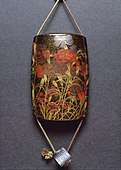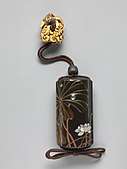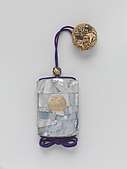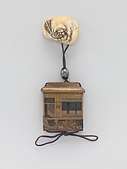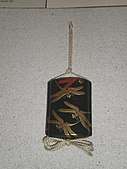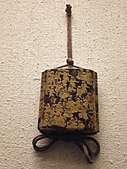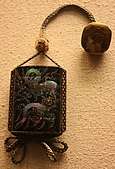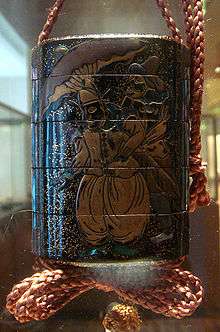Inro
An inro (印籠) is a traditional Japanese case for holding small objects, suspended from the obi (sash) worn around the waist. They are often highly decorated, in a variety of materials and techniques, in particular often using lacquer.
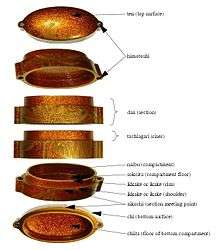
Because traditional Japanese robes lacked pockets, objects were often carried by hanging them from the obi in containers known as sagemono (a Japanese generic term for a hanging object attached to a sash). Most sagemono were created for specialized contents, such as tobacco, pipes, writing brush and ink, but the type known as inro was suitable for carrying anything small.
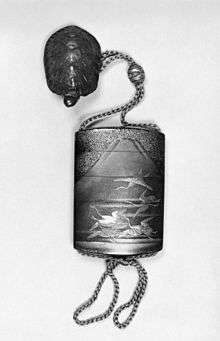
The term inro derives from the Sino-Japanese roots in (from Middle Chinese jin 印 "seal") and rō (MC luwng 籠 "cage").
Description

Consisting of a stack of tiny, nested boxes, inro were most commonly used to carry identity seals and medicine. The stack of boxes is held together by a cord that is laced through cord runners down one side, under the bottom, and up the opposite side. The ends of the cord are secured to a netsuke, a kind of toggle that is passed between the sash and pants and then hooked over the top of the sash to suspend the inro. An ojime, or bead, is provided on the cords between the inro and netsuke to hold the boxes together. This bead is slid down the two suspension cords to the top of the inro to hold the stack together while the inro is worn, and slid up to the netsuke when the boxes need to be unstacked to access their contents. inro were made of a variety of materials, including wood, ivory, bone, and lacquer. Lacquer was also used to decorate inro made of other materials.
Inro, like the ojime and netsuke they were associated with, evolved over time from strictly utilitarian articles into objects of high art and immense craftsmanship.
Gallery
See also
References
- "Inro with Cranes Soaring by Mount Fuji, and Netsuke of a Turtle". The Walters Art Museum.
- Bushell, Raymond "The Inrō Handbook", Weatherhill, 2002. ISBN 0-8348-0135-3
- "Legend in Japanese Art" by Henri L. Joly; 1908/1967; Charles E. Tuttle, Rutland VT; ISBN 0-8048-0358-7
External links
| Wikimedia Commons has media related to Inrō. |
- Netsuke: masterpieces from the Metropolitan Museum of Art, an exhibition catalog from The Metropolitan Museum of Art (fully available online as PDF), which contains many examples of inro
- Birmingham Museums & Art Gallery
